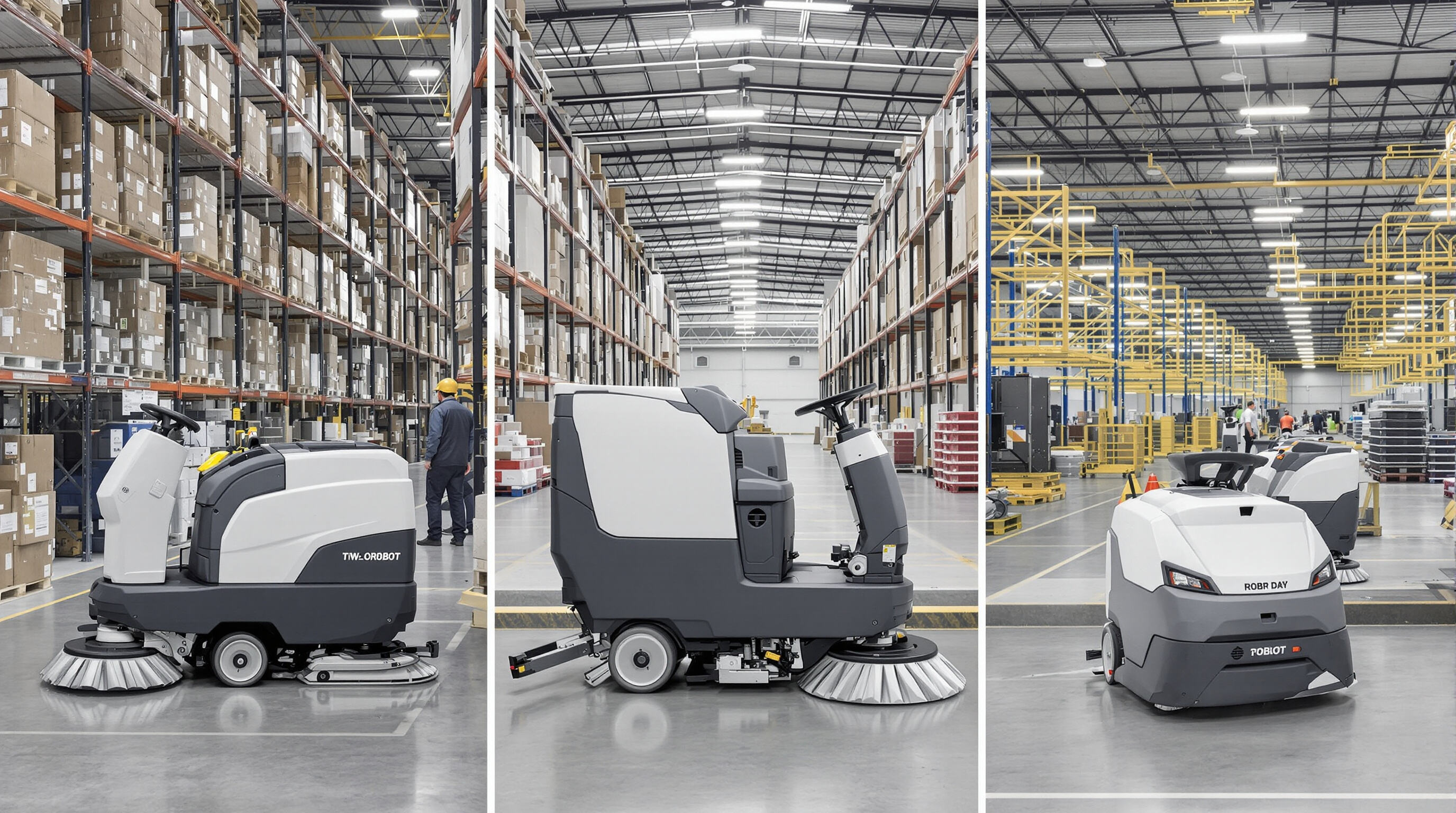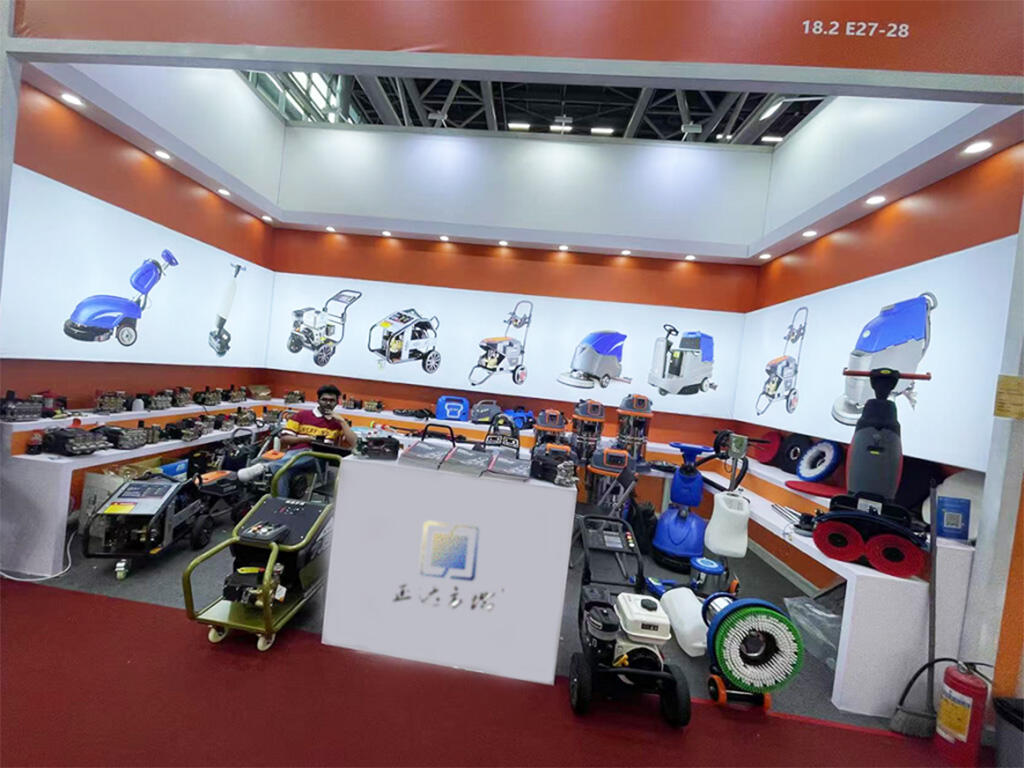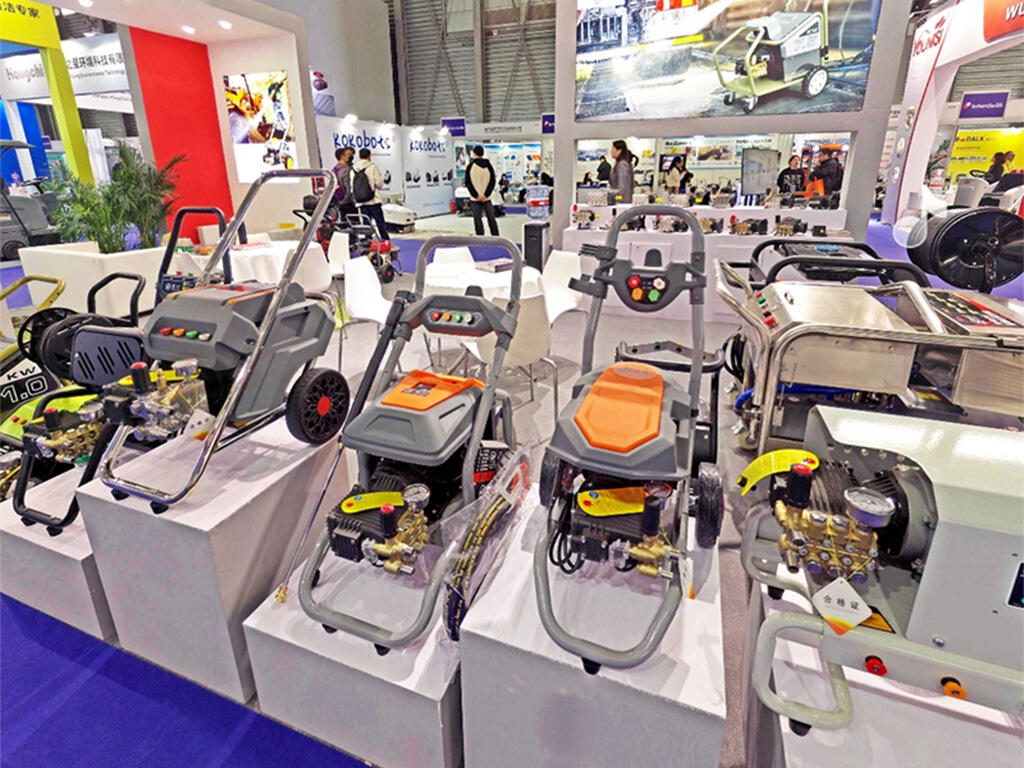Improving Health and Safety in Industrial Environments
Industrial floor sweepers address critical safety challenges in manufacturing facilities, where debris-related accidents cost businesses $740k annually in direct costs (Ponemon 2023). By systematically removing workplace hazards, these machines mitigate risks while supporting regulatory compliance.
Reducing slip, trip, and fall hazards through consistent debris removal
59% of manufacturing facility accidents stem from slips/trips on accumulated debris (OSHA 2024). Automated floor sweepers eliminate this risk through scheduled cleaning cycles that maintain <2mm debris depth across high-traffic zones—a threshold proven to reduce accident rates by 83% compared to manual sweeping methods.
Improving air quality by controlling dust and particulate matter
Factory dust levels exceeding 5mg/m³ correlate with 32% higher respiratory illness rates among workers (NIOSH 2023). Modern sweepers with HEPA filtration achieve 99.97% particulate capture efficiency, maintaining air quality within WHO-recommended thresholds for industrial environments.
Ensuring compliance with OSHA and workplace safety regulations
The updated OSHA General Industry Standard 1910.22 mandates documented floor maintenance protocols for facilities with >50 employees. Automated sweepers provide audit-ready cleaning logs and real-time particulate monitoring—key requirements under the 2025 regulatory updates.
Manual cleaning vs. automated floor sweepers: Efficacy in high-risk zones
| Safety Metric | Manual Cleaning | Automated Sweepers |
|---|---|---|
| Debris removal rate | 68% | 97% |
| Labor cost/hour | $38 | $12 |
| Accident reduction | 41% | 89% |
Data from 2023 manufacturing safety surveys shows automated systems reduce cleanup-related worker exposures in high-risk areas like loading docks by 79% compared to manual methods.
Boosting Operational Efficiency in Factory Cleaning Processes
Increasing Cleaning Efficiency and Reducing Labor Costs in Large Facilities
In large manufacturing spaces over 100,000 square feet, industrial floor sweepers handle debris collection automatically, letting smaller cleaning crews keep things spotless three times quicker than old fashioned brooms and vacuums ever could. Think about it this way: one person riding around on these machines can do what would normally take six to eight workers in a warehouse setting. That kind of efficiency translates into real money saved too. Companies report cutting their cleaning costs by around 70 percent each year when they switch to automated systems. For a mid sized plant, that means saving roughly $310,000 annually according to recent industry research from 2023. The advantages go beyond just numbers though. These machines work round the clock without needing extra hours paid at premium rates. They also ensure consistent cleaning throughout entire facilities where traditional methods often miss spots. Plus there's the bonus of fewer workplace injuries related to repetitive motions since staff aren't constantly sweeping and vacuuming themselves into exhaustion anymore.
Time-Saving Advantages of Industrial Floor Sweepers Over Traditional Methods
Automated sweepers complete facility cleaning 58% faster than manual crews by combining brushing, vacuuming, and debris containment in one pass. In automotive plants, this reclaims 12–18 production hours weekly previously lost to cleaning downtime. The latest models feature route optimization software that reduces redundant paths by 40%, further compressing cleaning cycles.
Impact of Floor Sweeper Efficiency on Overall Manufacturing Productivity
Debris-free production areas lead to 32% fewer jams and collisions in conveyor systems and AGVs (Automated Guided Vehicles), according to plant maintenance reports. Metalworking facilities using robotic floor sweepers report 0.9% higher Overall Equipment Effectiveness (OEE) scores—a key lean manufacturing metric—due to reduced equipment wear from abrasive dust particles.
Effective Dust and Debris Control in High-Output Industrial Settings
Strategies for dust control using industrial floor sweepers and scrubbers
Factories today are increasingly using floor sweepers alongside air scrubbers to tackle dust and other small particles at different levels throughout the facility. The best high efficiency units can grab around 95% of those bigger particles that measure over 10 microns during just one sweep according to the OSHA 2023 Technical Manual, which really cuts down on the chance of these particles getting kicked back into the air. Many plants also install cross draft ventilation systems that work wonders by pushing floating dust toward main collection areas. This setup has been shown to slash contamination problems inside cleanrooms by nearly two thirds in automotive manufacturing settings where cleanliness standards are extremely strict.
Applications in high-debris environments such as steel mills and mines
Heavy-duty sweepers with magnetic separator attachments achieve 78% scrap metal recovery in steel processing facilities, while explosion-proof models handle combustible dust loads exceeding 1,200 g/m³ in mining operations. These systems process 18,000 sq ft/hr in foundries, outperforming manual methods by 4:1 in debris capture consistency (NIOSH 2022 Hazard Control Report).
Long-term benefits for indoor environmental quality
Consistent dust control extends HVAC filter lifecycles by 40% and reduces respiratory-related absenteeism by 31% over three-year periods (CDC 2021 Workplace Health Study). Facilities maintaining ISO 14644-1 Class 7 standards report 22% fewer product defects in precision manufacturing compared to uncontrolled sites.
Cost-Effectiveness and Long-Term Maintenance Advantages
Lowering Maintenance Costs Through Extended Floor Lifespan
Keeping floors clean with regular sweeping keeps those tiny bits of grit from wearing down concrete surfaces over time. Studies show that facilities which maintain daily cleaning routines experience between 40 to 60 percent less surface degradation than places where dirt builds up (as noted in the latest Industrial Maintenance Report for 2024). When workers sweep away metal scraps, broken glass pieces, and leftover chemicals every day, they're actually saving money on expensive epoxy coatings and concrete patching work that can cost anywhere from $18 to $32 per square foot. Companies that implement proper sweeping schedules typically see their overall maintenance expenses drop by around 15 to 30 percent. And interestingly enough, facilities using modular sweeper designs report annual savings of approximately $7,200 just on replacing worn out parts because these systems tend to last longer without needing constant repairs.
Return on Investment From Reduced Downtime and Equipment Wear
Floor sweepers that run automatically cut down on production stoppages since they clear away dirt and debris about 3.5 times quicker than when people do it manually. Many facilities have noticed around 18 percent fewer issues with conveyor belts getting stuck, plus bearings last about 12% longer because there's better control over small particles everywhere. Looking at what various maintenance reports show, businesses typically get between $3.20 and $4.80 back for every dollar spent on these cleaning machines over time. This happens mainly because machines need less fixing and everything gets cleaned up much faster than traditional ways.
Types of Industrial Floor Sweepers and Their Factory Applications

Industrial floor sweepers are categorized into three primary designs, each optimized for specific operational needs. Understanding these distinctions ensures factories achieve optimal cleaning efficiency while minimizing labor and energy costs.
Comparing Walk-Behind, Ride-On, and Robotic Floor Sweepers
Walk-behind models excel in narrow aisles or congested layouts, offering 20–30 inches of cleaning width and precision control. Ride-on sweepers cover 40–60 inches per pass, ideal for large warehouses requiring rapid cleanup. Robotic sweepers operate autonomously using LiDAR sensors, enabling 24/7 cleaning in high-traffic zones without human intervention.
| Feature | Walk-Behind | Ride-On | Robotic |
|---|---|---|---|
| Cleaning Width | 20–30 inches | 40–60 inches | 18–35 inches |
| Best For | Tight spaces | Large open areas | Continuous use |
| Power Source | Electric/Battery | Diesel/Battery | Battery |
Matching Sweeper Types to Specific Manufacturing Environments
Food processing plants often use walk-behind sweepers for maneuverability around equipment, while automotive factories deploy ride-on models to clear metal shavings across expansive floors. Robotic sweepers are increasingly adopted in electronics manufacturing, where consistent dust control prevents product contamination.
Innovations in Battery-Powered and Smart Robotic Sweepers
Battery powered sweepers cut down on carbon emissions by around 60% when compared to their diesel counterparts according to Facility Management Journal from 2024, plus they can handle full eight hour workdays on just one charge. The newer AI robots come equipped with something called real time debris mapping technology which lets them adjust their cleaning routes as needed, focusing first on areas where dirt tends to accumulate most quickly. What makes these machines really stand out though is how well they fit into what's known as Industry 4.0 practices. By feeding all that floor cleaning data back into main facility management systems, building operators get early warnings about potential problems before they become serious issues affecting operations.
FAQ
What are the main benefits of using industrial floor sweepers?
Industrial floor sweepers improve safety by reducing debris-related hazards, enhance air quality, ensure regulatory compliance, and offer significant cost and labor savings compared to manual cleaning methods.
How do automated sweepers help factories save costs?
Automated sweepers reduce labor costs, cleaning time, and floor maintenance expenses while minimizing workplace injuries related to repetitive cleaning tasks.
What types of industrial sweepers are available?
There are walk-behind, ride-on, and robotic sweepers, each suited for specific environments such as tight spaces, large open areas, and continuous use in high-traffic zones.
How do modern sweepers improve air quality?
Modern sweepers with HEPA filters capture 99.97% of particulate matter, maintaining air quality within recommended thresholds and reducing respiratory illness rates among workers.
Table of Contents
- Improving Health and Safety in Industrial Environments
- Boosting Operational Efficiency in Factory Cleaning Processes
- Effective Dust and Debris Control in High-Output Industrial Settings
- Cost-Effectiveness and Long-Term Maintenance Advantages
- Types of Industrial Floor Sweepers and Their Factory Applications




